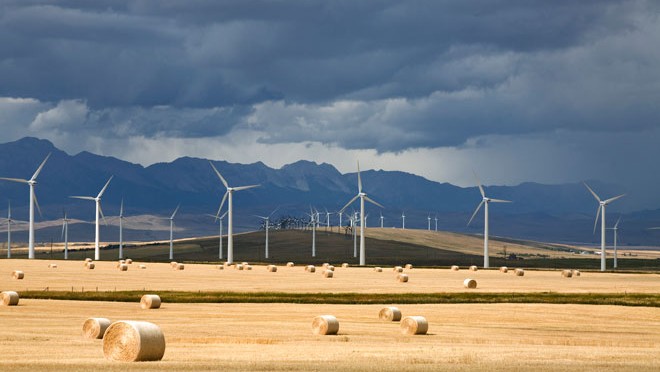The Global Wind Energy Council (GWEC) recently released its 2012 market statistics, showing continued expansion of the market, with global installed wind energy capacity increasing by 19 per cent in 2012 to 282,000 MW.
Canada remains a global wind energy leader as it experienced the 9th largest increase in installed capacity in 2012 (936 MW). Both China and the United States, the world’s wind energy leaders, installed more than 13,000 MW of new capacity in 2012.
“While China paused for breath, both the US and European markets had exceptionally strong years,” said Steve Sawyer, Secretary General of GWEC. “Asia still led global markets, but with North America a close second, and Europe not far behind.”
Canada now ranks 9th globally in total installed capacity with more than 6,500 MW of wind energy in operation – providing enough power to meet the annual needs of almost 2,000,000 Canadian homes.
Ontario is the Canadian leader in the production of clean wind energy with more than 2,000 MW of installed capacity now supplying over 3 per cent of the province’s electricity demand. Both Ontario and Quebec will lead the country with new installations of clean wind energy in 2013 as the Canadian Wind Energy Association (CanWEA) expects to see a record year for new installations with the addition of almost 1,500 MW of new capacity – driving over $3 billion in new investments.
The growth of wind energy development in Ontario and Quebec continues to have strong public support. A 69 per cent majority of Ontarians agreed “Ontario should be a leader in wind and solar energy production”, compared to only 20 per cent that disagreed, according to the results of a January Oracle Research poll commissioned by CanWEA .
Eleven per cent of respondents were neutral on the issue. The same poll also found that solar and wind energy scored highest in a top-of-mind question about Ontarians’ preferred choice for new electricity generation. A February 9 public opinion poll (available in French only) published in Quebec’s Le Devoir newspaper showed 79 per cent of respondents support continued wind energy development in that province.
“Wind energy continues to enjoy strong majority support as a choice for new electricity generation in Ontario and Quebec because it is understood to be both good for the environment and a provider of significant economic benefits for local economies that host developments,” said Robert Hornung, president of CanWEA. “Less well known is the fact that wind energy is also now cost-competitive with virtually every option for new electricity generation. It is for these reasons that wind energy continues to be the fastest growing mainstream source of electricity in the world.”
The rapid growth of wind energy in Canada is also reflected south of the border where the American wind industry had its best year ever in 2012, with more than 13,000 MW installed. The extension of the Production Tax Credit (PTC) in the US means that although the market will slow substantially in 2013, it is unlikely to be as much of a slowdown as originally expected, said Sawyer.
CanWEA is the voice of Canada’s wind energy industry, actively promoting the responsible and sustainable growth of wind energy on behalf of its almost 400 members. A national non-profit association, CanWEA serves as Canada’s leading source of credible information about wind energy and its social, economic and environmental benefits. To join other global leaders in the wind energy industry, CanWEA believes Canada can and must reach its target of producing 20 per cent or more of the country’s electricity from wind by 2025. The document Wind Vision 2025 – Powering Canada’s Future is available at www.canwea.ca


